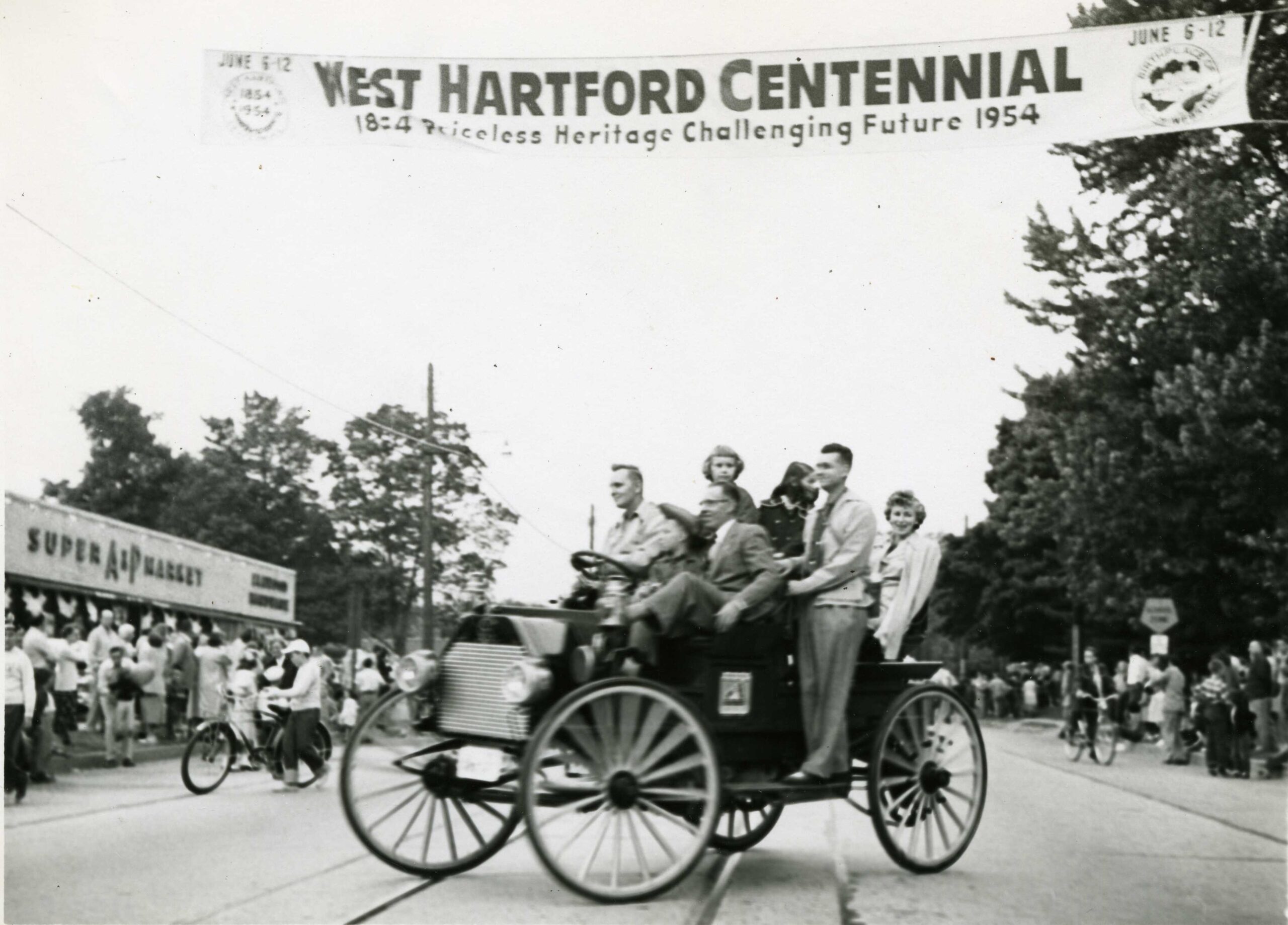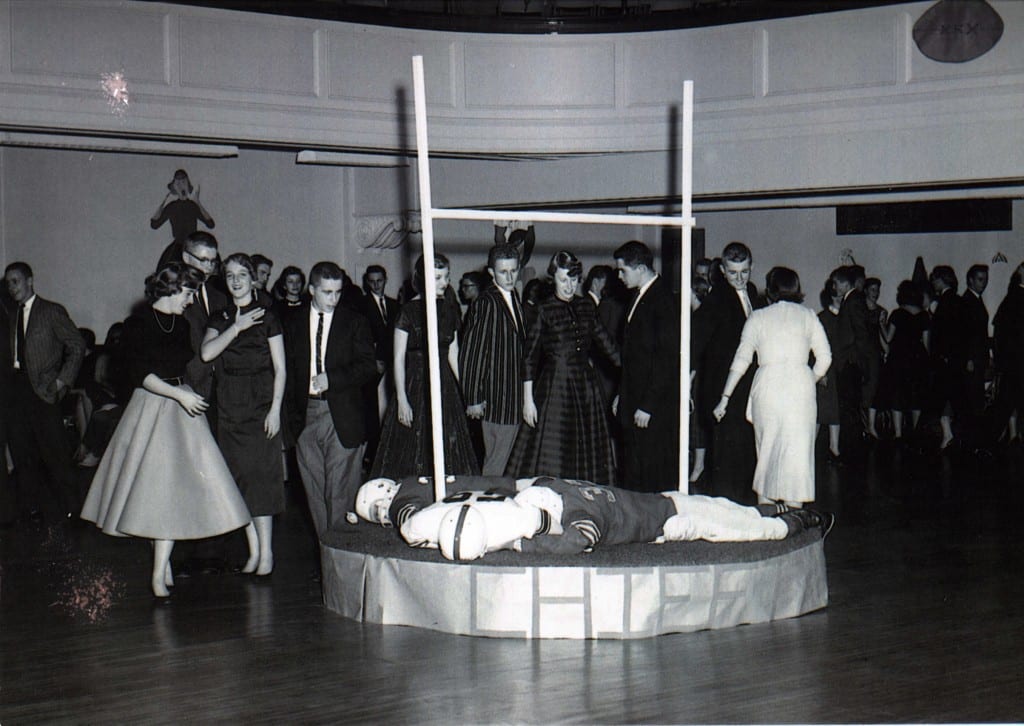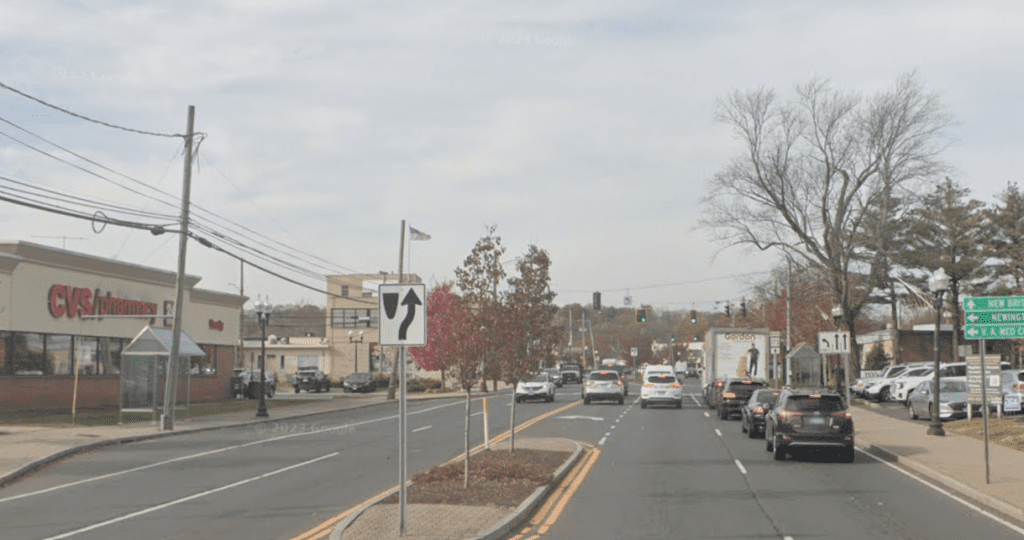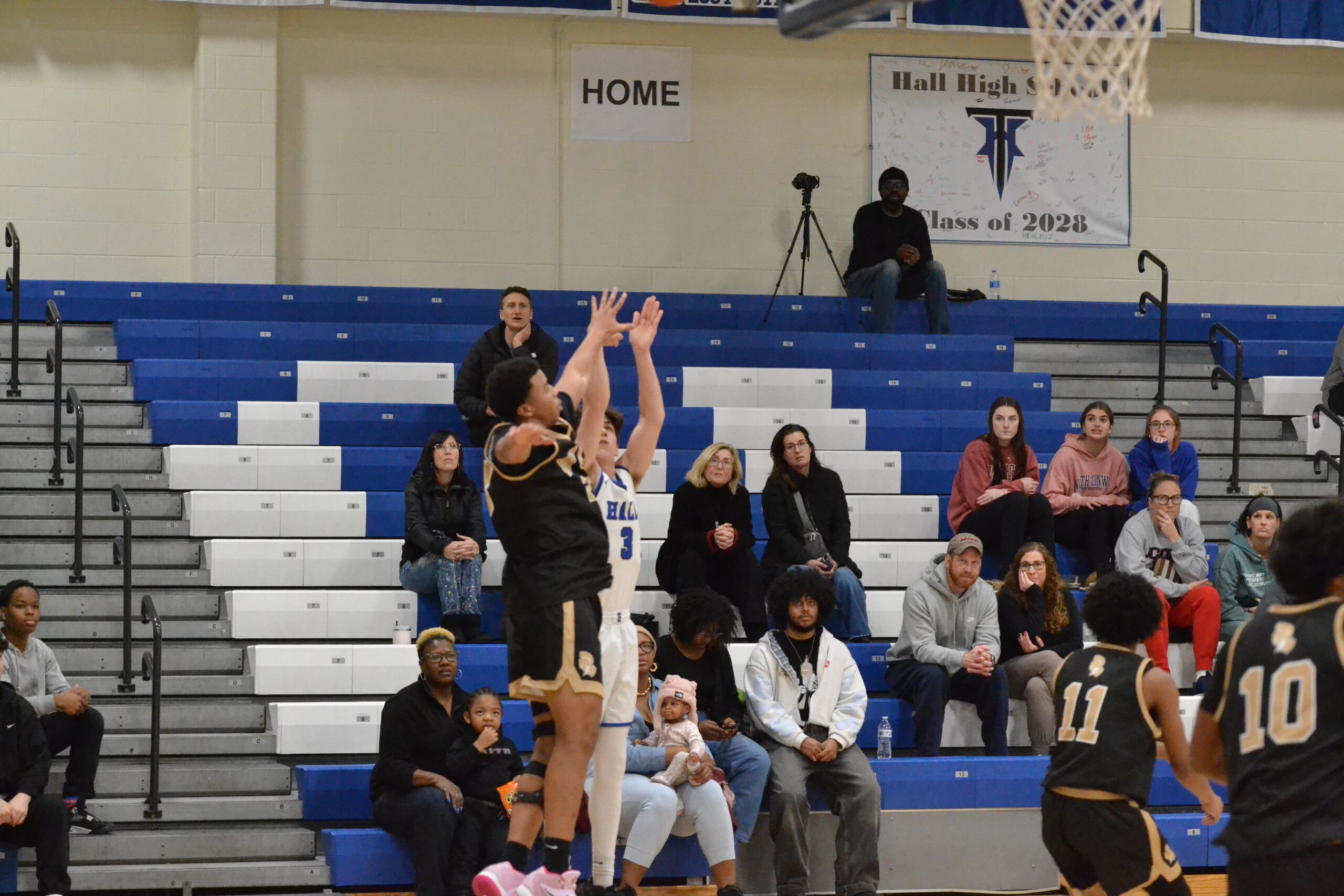From the West Hartford Archives: West Hartford Centennial, 1954

Audio By Carbonatix

West Hartford Centennial Parade, 1954. Photo courtesy of Noah Webster House & West Hartford Historical Society
Historian Jeff Murray takes a look into West Hartford’s past to uncover some surprising information, stir up some memories, or reflect on how much life has changed – or hasn’t changed at all. Enjoy this week’s ‘From West Hartford’s Archives’ …
By Jeff Murray
On June 6, 1954, West Hartford celebrated 100 years since its independence from Hartford with a massive week of events. This photograph is from the parade in Elmwood along New Britain Avenue in front of the A&P, what is now CVS. The events of the day can tell us what was considered important – whether in 1954 or all the way back to the town’s independence.
By the time of the centennial, there were enough generations removed from the beginning that many residents simply didn’t know the local history.
There was a heavy reliance on the stories of the town “elders,” those who had been born between 1870 and 1890. These residents grew up in a West Hartford that saw an immense amount of growth in the Center and beyond, including the development of suburban streets and commercial enterprises at busy intersections.
New houses in 1954 were fashioned with air conditioning and suitable for the installation of new television sets. There was also considerable discussion about the issues of parking and the need for playgrounds on rapidly dwindling public land. Businesses had seemed to take over by this point – it is notable that during this centennial week, the Hartford Courant featured huge advertisements from the town’s biggest (and smallest) businesses looking to capitalize on the fanfare.
The first two days of the celebration (June 6 and 7) featured special services in all of the churches and synagogues of the town, as well as a “Progress Exposition” at the West Hartford Armory on Farmington Avenue, a historical exhibit in the Center, and an outdoor basketball game at Duffy School.
Religion continued to play a significant role in public life and although individual places of worship had relatively small membership alone, there had been a lot of new construction of temples and churches for different faiths and denominations from the 1920s to the 1950s. The mention of the plural “synagogues” is also noted, as this era saw a deeper development of the local Jewish population, which had been clustered mainly along Farmington Avenue and Quaker Lane since the early 1900s. By this point, there were multiple synagogues (and less than a month after this centennial, the West Hartford Jewish Center on Dover Road would rename itself to Congregation Beth David). The exhibits of the centennial focused mainly on the largest Christian church, the Congregational Church, but union services and combined events helped demonstrate the diversity of religious thought in West Hartford in 1954.
The third day (June 8) included a dinner for former and present town officials at the Rockledge Country Club, a tour of historical houses across West Hartford, and high school reunions (it was only Hall High School since Conard was not yet built). The fourth day (June 9) sponsored a “historical” pageant at Hall High under the school officials.
The bureaucracy had been built steadily since the 1910s with planning and zoning commissions, police and fire departments, and the adoption of several town offices that helped give the growth structure, like the work of the building inspector. The development of the public library and the continued preservation of historical houses were helpful in maintaining the involvement of the local residents in community planning.
West Hartford was the first town in Connecticut to adopt the town manager style of government in 1919, a point of pride pinned along the road of town “firsts” (indeed, the Hartford National Bank & Trust Company did not hesitate to appeal to Noah Webster, his birthplace here, and his American dictionary in helping draw some connection between them and the mighty town).
June 10 focused exclusively on Elmwood, the only section of town that had the privilege of its own day during the week. Traditionally centered at the corner of New Britain Avenue and South Quaker Lane, the area had seen tremendous development along the avenue and on its side streets. New homes were built on open land developed by nearby industrial companies, clusters of immigrants, and real estate magnates, some from historical Elmwood families (like Wallace B. Goodwin).
One could write on the Elmwood identity for many pages, but to me, the irony actually comes partly from the fact that no one can really define where the boundaries are (and people will debate fiercely on the topic!). Some believe that Wolcott Park is part of Elmwood; some believe it goes as far north as Park Road; and others believe it ends somewhere just after the underpass.
Wherever the boundaries are, however, the Elmwood of 1954 was intensely optimistic of its future. Businesses had cropped up along the avenue for many decades, but it seemed to concentrate in the 1950s with the construction of brand new shopping plazas and commercial blocks, all sponsored by the Elmwood Business Associates formed four years prior.

Event in the old Hall High School gym, now the Town Hall auditorium. Photo courtesy of Noah Webster House & West Hartford Historical Society
On June 11, a parade was held, followed by the Square Dancers Festival at Sterling Field. Finally, on June 12, the centennial concluded with fireworks set off after dark following a number of athletic match-ups in softball and baseball.
These events reflect the town’s emphasis on not just its political and civic institutions, but its education system. The centennial showcased the school buildings that came and went; the people they were named after (like William Thompson Sedgwick); the school children that graduated and went on to do great things; and the sports, music, art, and other cultural activities that brought everyone together.

Current view of the area where the 1954 Centennial Parade was held, on New Britain Avenue near Newington Road, looking west (Google Street View)
Kate Whitman, Hall High Class of 1896, spoke about her memories from nearly 60 years before. In the descriptions of the “elders” of the day, there is much reminiscing and nostalgia but there is also a hint of concern for the youth of 1954 in a town that perhaps grew too fast. There is happiness in the evolution from one-room schoolhouses to modern school buildings with better infrastructure. There is pride in the high attendance of schoolchildren in arts and athletics programs, and in the strength of the community to make sure no one was left behind, but there is also a sense that that cooperative effort has to be constantly and actively maintained or its results would surely be lost to time otherwise.
It is therefore very fitting that the tagline of the centennial was “Priceless Heritage – Challenging Future.” This word use is interesting to me. It does not embody the endless (and sometimes baseless) optimism that we usually associate with the economic wealth of the 1950s and instead uses a more realistic word for the feeling of the era – “challenging” – that there would indeed be more construction and commercial development for all of the needs for housing and shopping, but that there were big questions ahead for West Hartford as a whole. There were major budget concerns associated with such fast population growth, anxiety over the proposed East-West Expressway (which eventually tore its way through the town as I-84 a decade later), and the slow degradation of the close-knit community.
In a few weeks, it will be 70 years since this jubilant centennial celebration. If “Priceless Heritage – Challenging Future” described West Hartford in 1954, I think it still does today.
Jeff Murray was born and raised in West Hartford and has been involved with the Noah Webster House & West Hartford Historical Society since 2011 when he was a high school student and won the Meyer Prize for his essay on local history. Jeff routinely volunteers as local history researcher uncovering information for numerous museum programs such as the West Hartford House Tour and West Hartford Hauntings. Jeff works as a data analyst at Pratt & Whitney.
Like what you see here? Click here to subscribe to We-Ha’s newsletter so you’ll always be in the know about what’s happening in West Hartford! Click the blue button below to become a supporter of We-Ha.com and our efforts to continue producing quality journalism.




this was wonderful thanks for the great post!
-long time weha resident
on June 9th 1954, I was a student at Alfred Plant Junior High.
our school took part in the pagant.
our scene depicted the fact that citizens of West Hartford collected money and sent it ro General George Washinton at Valkey Forge.
Fred Dearborn , our music director, drove me to horse back riding lessons.
Ob both the dress rehersal and the event , I rode the horse from the police station parking lot to the stage, dismounted, received a saddlebag, and rode off.
The event was filmed and the bright lights caused the horse to rear up.Luckily; I stayed on.
Does the film stull exist?
If so I would love to come back and see it.